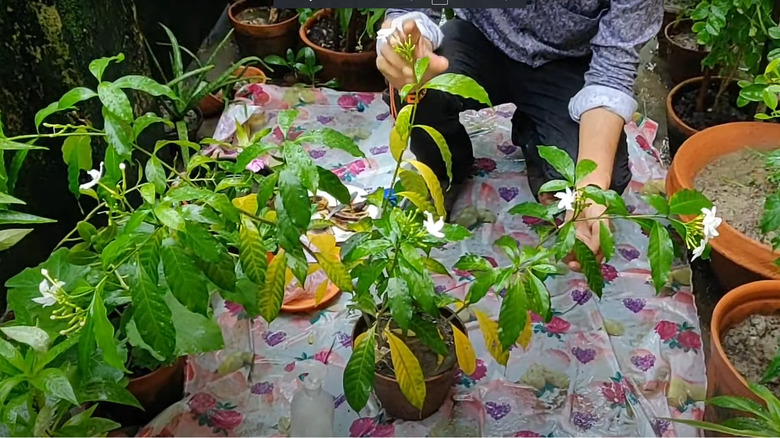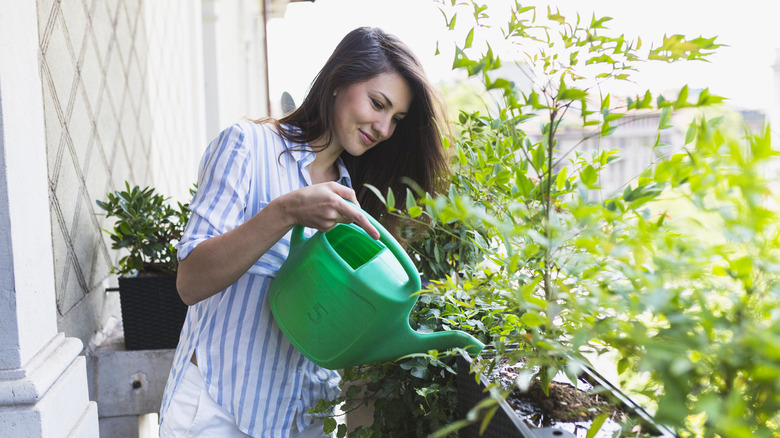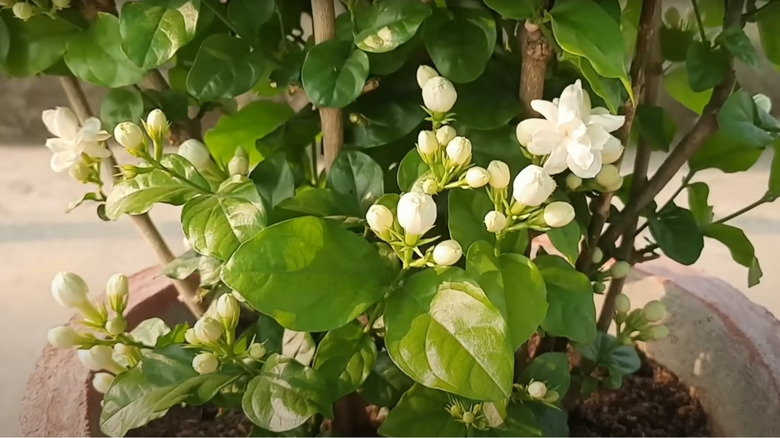The Big Mistake That Causes Yellow Leaves On Indoor Jasmine Plants
Jasmine plants are well-known for their enchanting fragrance, filling indoor spaces with a sweet and pleasant scent, especially during their blooming periods. This natural air freshening quality enhances the ambiance of any room. It's no wonder they've earned their place as beloved indoor plants. These hardy, low-maintenance plants with glossy, deep green leaves add aesthetic appeal and contribute to a calming atmosphere within a home. However, even the most hands-on plant enthusiasts may encounter a common issue with jasmine plants: the troubling sight of yellowing leaves. Often, this vexing problem can be traced back to mistakes with watering or improper irrigation practices.
Amateur gardeners may inadvertently subject their indoor jasmine plants to water-related stress, disrupting the delicate balance required to produce healthy foliage. The causes of yellowing leaves can range from overenthusiastic watering to neglectful underwatering. In the pursuit of a flourishing indoor garden, understanding the nuances of irrigation is paramount to prevent the onset of this yellowing phenomenon.
The link between yellowing leaves and watering errors
Yellowing leaves in indoor jasmine are a visible distress signal, reflecting the delicate balance between hydration and plant health. Overwatering, a common pitfall, saturates the soil, leading to poor aeration and diminishing the oxygen supply to the roots. As a result, root rot may set in, compromising the plant's ability to uptake nutrients efficiently. On the flip side, underwatering deprives the jasmine plant of its vital life force — water. This drought stress triggers a defensive response in the form of leaf yellowing as the plant reallocates resources to vital organs.
To remedy these issues, adopt a mindful watering routine. Ensure that your jasmine plant pots have drainage holes to prevent water-logged conditions. Since potted jasmine plants have a set amount of soil, abiding by a weekly watering schedule should suffice. But if you live where it's usually hot and dry, or your jasmine plants typically get plenty of sunlight, you may need to water them more frequently. Observing the plant's response to your watering efforts and adjusting the schedule accordingly is key to maintaining optimal soil moisture.
Comprehensive care for thriving jasmine plants
Beyond mastering the nuances of irrigation, optimal jasmine plant care involves paying attention to various environmental factors. These plants thrive where there is plenty of sunlight (though they can still grow in partial shade), simulating their native tropical habitats. A well-balanced fertilizer, high in phosphorus, applied once a week during the growing season ensures robust growth and abundant blooms. Additionally, removing wilting flowers can encourage the growth of new ones. Choosing the right potting mix is also crucial. A blend of well-draining potting soil and perlite or sand prevents waterlogging and enhances aeration. Organic matter, such as compost, enriches the soil, providing essential nutrients. Regular pruning is beneficial for shaping the plant and removing diseased or yellowing leaves, promoting overall plant health.
As with most types of plants, caring for indoor jasmine plants involves a multifaceted approach. By addressing their specific environmental needs, you can ensure that your jasmine plants not only survive but thrive, gracing your home with their lush greenery and fragrant blossoms.


